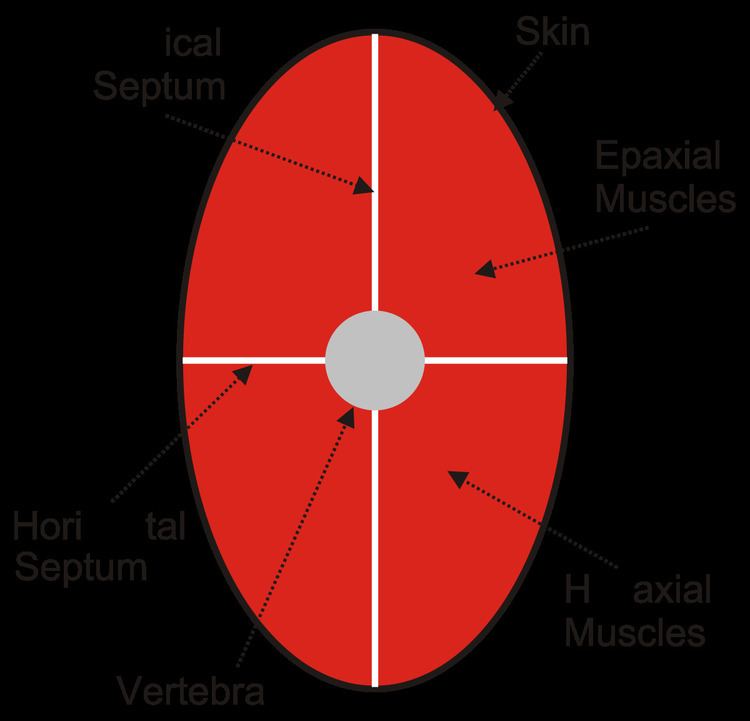 | ||
Trunk muscles can be broadly divided into hypaxial muscles, which lie ventral to the horizontal septum of the vertebrae and epaxial muscles, which lie dorsal to the septum. Hypaxial muscles include some vertebral muscles, the diaphragm, the abdominal muscles, and all limb muscles. Epaxial muscles include other (dorsal) muscles associated with the vertebrae, ribs, and base of the skull. In humans, the erector spinae, the transversospinal muscles (including the multifidus, semispinalis and rotatores), the splenius and suboccipital muscles are the only epaxial muscles.
Location
The hypaxial muscles are located on the lower side of the body, often below the horizontal septum in many species (primarily fish and amphibians). In amniotes, the positional distinctions have been lost as the body's muscles have changed through evolution, but in all species, the hypaxial muscles are innervated by the ventral ramus (branch) of the spinal nerves, while the epaxial muscles are innervated by the dorsal ramus.
